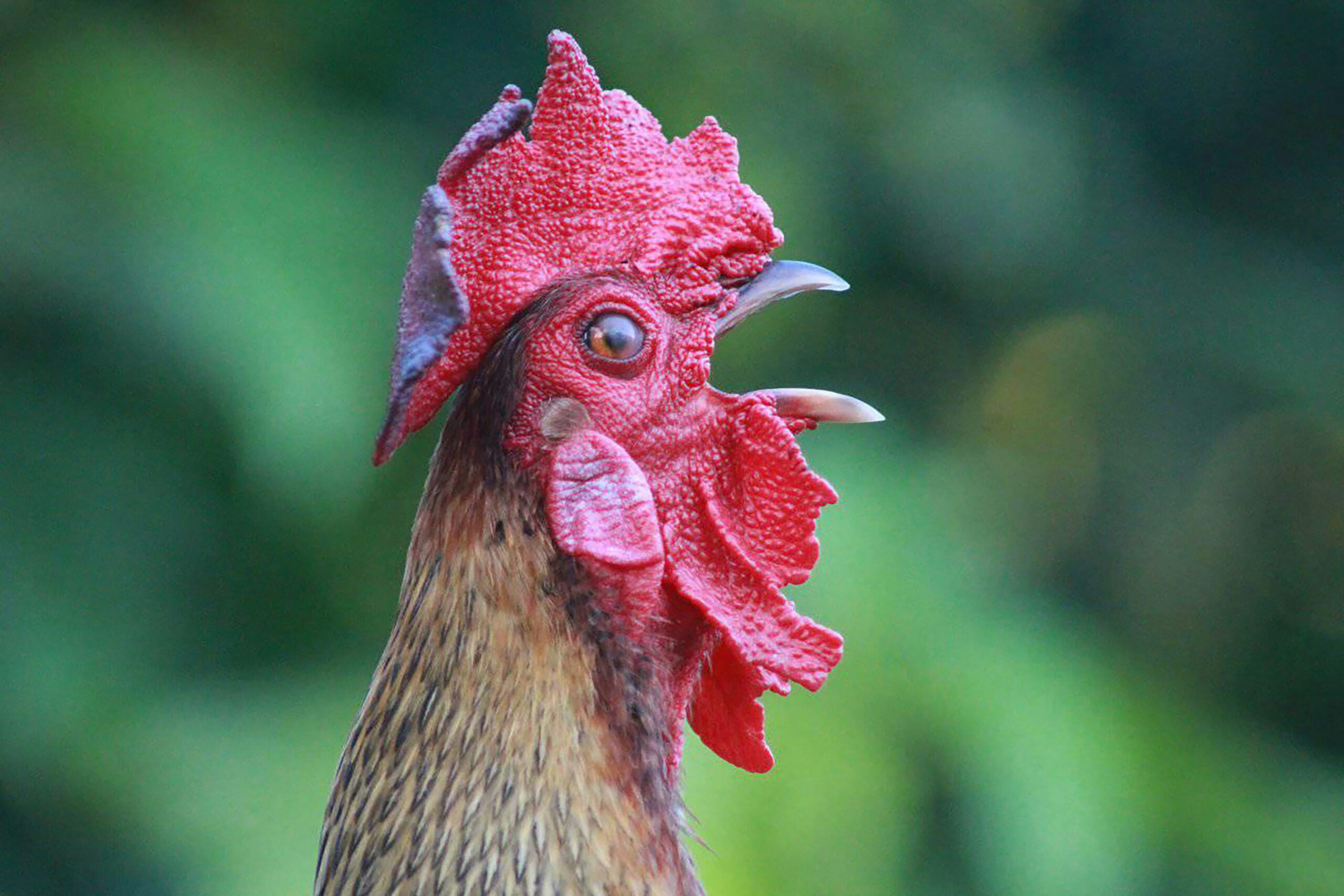
How Do Roosters Not Go Deaf When They Crow?
Roosters don’t do anything quietly. Their iconic crow can hit up to 142 decibels – louder than a chainsaw and almost as loud as a jet engine at takeoff. And here’s the twist: they do it right next to their own ears, multiple times a day. So how do they avoid deafening themselves? The answer lies in clever anatomy and timing.
Self-deafening prevention, built in
When a rooster tilts its head back to crow, it activates a protective mechanism inside its ears. Just before the sound escapes its beak, small muscles in the ear canal contract, effectively closing the ear from the inside. Think of it as a biological earplug, but one that activates only during the rooster’s own vocalization.
This contraction blocks most of the sound vibrations from reaching the sensitive parts of the inner ear, shielding it from the rooster’s own noise. The timing is so precise that this defense kicks in just before the crow begins.
Still loud… But safe
The rooster’s skull and vocal anatomy also help reduce sound damage. Unlike humans, their inner ear is structured to absorb and dampen vibrations more effectively. And since the protective muscles don’t stay contracted long, they’re still able to hear external sounds shortly after crowing stops.
Interestingly, this protection only applies to their own crowing. They still hear other roosters just fine, which keeps their territorial and social instincts intact.
